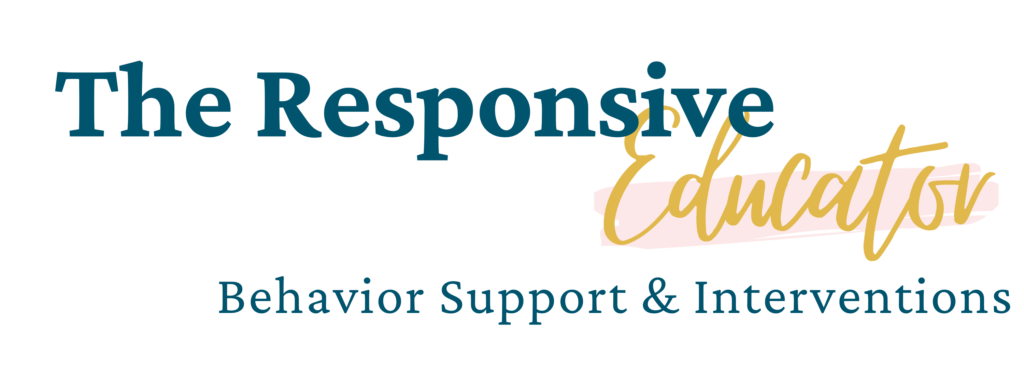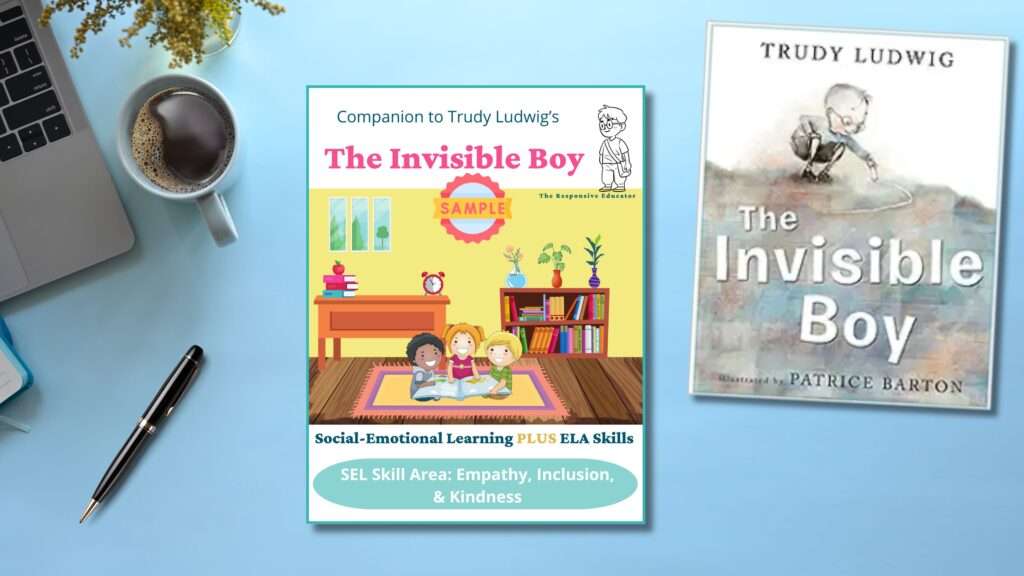


In today’s digital world, screens are everywhere—and for kids, the pull of games, videos, and messaging apps can be hard to resist. While technology has its place, helping children develop healthy habits early on is essential. From learning when to unplug to understanding digital footprints and online safety, kids need guidance to navigate tech in a way that’s safe, kind, and balanced.
The books in this post offer just that—through relatable characters, engaging stories, and kid-friendly language. Whether you’re a teacher looking to spark classroom conversations or a parent trying to set boundaries at home, these read-alouds can help you open up meaningful dialogue. Each one tackles a different aspect of technology use, offering both humor and heart to support positive digital citizenship from an early age.
For some of the books on this page, I have created interactive read-alouds to enrich their use in the classroom. These interactive read-alouds include discussion questions, activities, and prompts that engage students and deepen their understanding of the book’s themes. More interactive read-alouds are on the way. If there are specific books for which you would like to see a read-aloud created, please contact me using the form at the bottom of the page.
To learn more about supporting social-emotional learning and using interactive read-alouds in the classroom, check out these posts:
(As an Amazon affiliate, I earn a small commission if you purchase products through the links on my posts. Thank you for your support!)
Summary: Diggory Doo, a lovable pet dragon, has a serious screen time problem. He brings his devices everywhere—from the dinner table to the bathroom stall—and throws fits when asked to put them down. Luckily, his young owner, Drew, steps in to help him find a healthier balance between virtual and real-world fun. Through rhyming text and bright illustrations, this story guides kids in recognizing the signs of tech overuse and discovering all the joy they might be missing offline.
Description: This book is part of the popular “My Dragon Books” series and serves as a teaching book designed to gently model behavior change. Diggory’s over-the-top tech habits make it easy for kids to see the consequences of too much screen time—without feeling judged themselves. The book’s exaggerated scenarios and silly rhymes open the door to meaningful conversations about boundaries, boredom, and alternatives to screens. While the solutions are simplified for young readers, the story sets the stage for building digital self-awareness. Ideal for ages 4–8, it’s particularly helpful as a social story for kids who struggle to disengage from devices.
Reviews and Considerations: Parents and teachers alike have praised this book for making a tough topic approachable and relatable. Many report it works well as a springboard for conversations or even launching a week-long tech break challenge. Kids connect with Diggory’s humorous antics, while adults appreciate the straightforward rhymes and consistent messaging across the series. Some readers note the story doesn’t go very deep into the “why” behind screen limits, but most agree it’s a valuable entry point. Educators have used it during Digital Citizenship or Internet Safety Week, and several families say it sparked noticeable changes in screen-time habits at home.

Summary: Jasper would rather be in a video game than in the real world—and he’s not shy about saying so. In the game, he’s powerful, important, and in control. But when his obsession with gaming begins to affect his behavior and relationships, Jasper has to face an important question: What’s he missing out on in real life? Through this relatable character, Julia Cook offers a window into the mindset of kids who get lost in virtual worlds and provides a gentle nudge toward self-awareness and balance.
Description: This teaching book is part social story, part cautionary tale. With rhyming text and colorful illustrations, it helps young gamers recognize when screen time shifts from fun to unhealthy. While some reviewers find it a bit wordy or heavy-handed, most agree it’s effective for sparking conversations about gaming limits. The story pairs well with the included tips for adults, offering practical strategies to create boundaries without meltdowns. It’s best suited for kids ages 6–10 and is frequently used by counselors, psychologists, and teachers working with children struggling to step away from games.
Reviews and Considerations: Educators and parents say this book hits home—especially for children who insist they’re “just playing.” Readers appreciate how the story frames the allure of gaming in language kids understand, while modeling positive change. The tips section is a standout feature, giving adults tools to individualize screen-time boundaries in realistic ways. Some users found the story a bit long or preachy for younger attention spans, but many others praised its relatability and noted improved attitudes about tech use after reading. For children who tend to resist screen time limits, this book can help build insight and reduce conflict.

Summary: Dot is a bright, energetic little girl who knows everything about technology—she taps, swipes, tweets, and shares with ease. But when screen time takes over her day, Dot learns that real-life adventures can be just as exciting as anything on a screen. With simple text and playful illustrations, this story follows Dot as she trades her devices for outdoor play and discovers the fun of connecting face-to-face.
Description: Written by tech executive Randi Zuckerberg, this story serves as a gentle introduction to the idea of digital balance. While Dot. doesn’t dive deeply into the consequences of screen overuse, it plants the seed that technology should be part of life—not all of it. The language is minimal and geared toward very young children (ages 2–5), making it a good first read for preschoolers beginning to use tablets or phones. Some critics feel the book sends mixed messages by starting with Dot’s tech enthusiasm, but most agree that it opens the door to important parent-child conversations about unplugging.
Reviews and Considerations: Many parents and educators use Dot. to spark discussions about screen habits with young children. Readers appreciate the vibrant illustrations and simple storytelling, though some wish the message were stronger or the content more age-targeted. While a few reviews raise concerns about the tech-positive framing early in the book, others see value in showing that kids can enjoy both technology and the real world. It’s especially effective as a conversation starter for families or classrooms just beginning to set screen-time boundaries.

Summary: In this addition to the My Dragon Books series, Diggory Doo dives into the digital world—and quickly runs into trouble. From unkind online posts to suspicious messages and in-app purchases gone wrong, Diggory’s online experiences reflect the real risks kids face today. With help from his friend Drew, Diggory learns the do’s and don’ts of internet safety, how to think critically before clicking, and why unplugging and connecting face-to-face still matters.
Description: This is a teaching book that blends storytelling with a clear educational purpose: guiding young children through the basics of online safety. Written in rhyming verse and supported by bright, engaging illustrations, it covers everything from protecting personal information to recognizing harmful digital behavior. The content is appropriate for elementary-aged students, particularly those who are just beginning to use devices independently. The story emphasizes kindness, responsibility, and the importance of balancing screen time with real-world connections—making it a useful conversation starter both at home and in the classroom.
Reviews and Considerations: Parents and educators value this book for its ability to spark conversations about online behavior in a calm, child-friendly way. Reviewers praise the clear examples and non-scary tone, with many noting it’s ideal for introducing key internet safety rules to younger kids. One standout feature is the way the book communicates caution around digital communication—using emoji illustrations to represent unkind posts without modeling harmful language. Whether read at home or in the classroom, this story helps children understand that digital citizenship isn’t just about rules—it’s about kindness, boundaries, and responsibility.

Summary: Joanie Maloney is thrilled to get her first cell phone—until her mom insists she complete a cell phone safety course first. “It’s just a phone,” Joanie protests, but she soon learns that a phone isn’t just a device—it’s a responsibility. Through Joanie’s journey, readers discover the “Six Rules of Cell Phone Use” that help kids avoid common tech traps, from oversharing and cyberbullying to distraction and misuse.
Description: Cell Phoney is a practical, story-based guide for helping kids understand how to use cell phones safely, respectfully, and responsibly. Julia Cook blends humor with real-life scenarios to introduce concepts like setting boundaries, avoiding unkind behavior online, and thinking before texting or posting. Best suited for upper elementary and early middle school students, this book is especially helpful for children receiving their first phone. It includes relatable examples, a parent-created phone contract, and memorable consequences that make the safety lessons stick.
Reviews and Considerations: Readers widely appreciate Cell Phoney for making cell phone safety approachable without sounding like a lecture. Parents, teachers, and counselors note that it works well as a conversation starter about digital citizenship. While some reviewers found the first part a bit lesson-heavy, many say the second half—with its humorous mishaps and clear messages—brings the story to life. It’s a solid pick for families setting tech boundaries or educators tackling digital behavior in the classroom, especially during the back-to-school season when phone privileges are often introduced.

Summary: In today’s digital world, everything you post—whether kind or cruel—leaves a mark. That’s the message in this creative story where “Screen” reminds kids that their texts, tweets, posts, and pics create a “technology tail” that follows them forever. Through catchy rhymes and a vivid metaphor, young readers learn how their digital actions have lasting effects and why it’s important to think before they share.
Description: Technology Tail is part of Julia Cook’s Communicate with Confidence series and focuses on building digital citizenship skills in children ages 6–11. The central metaphor of a tail growing longer with each online interaction makes the idea of a digital footprint visual and memorable. The story introduces concepts like online kindness, cyberbullying, and responsible posting in a way that’s age-appropriate and easy to connect with. Tips for parents and teachers are included to help extend the conversation beyond the book.
Reviews and Considerations: Teachers and parents frequently use this book to kick off digital citizenship lessons, particularly in grades 2–5. Many note that students really latch onto the visual idea of the “tail,” making it easier to discuss how their online behavior can stick with them. While some reviewers found the book a bit wordy or too advanced for younger grades, most praise it for tackling multiple important concepts without sounding alarmist. It’s especially well-suited for classroom read-alouds, guidance lessons, or family discussions around safe and respectful online communication.

Summary: Charlie McButton loves computers, video games, and anything with a battery. So when a thunderstorm knocks out the electricity, Charlie loses more than power—he loses his temper. Desperate for batteries, he eyes his little sister’s talking doll, but the chaos that follows forces Charlie to look beyond his screens and rediscover the joys of family, imagination, and unplugged play.
Description: This witty, rhyming picture book isn’t a traditional teaching text, but it delivers a relatable message about screen dependence in a lighthearted way. Aimed at children ages 5–9, it cleverly captures the frustration many kids feel when technology is taken away and turns it into a story of connection and creativity. The vibrant illustrations and humorous tone make it highly engaging, while the underlying lesson about balance and sibling bonding comes through naturally—without feeling preachy.
Reviews and Considerations: Teachers and parents love using this book to spark conversations about screen time limits, especially after power outages or “unplugged” days. Readers consistently praise the book’s read-aloud appeal and its ability to make kids laugh while planting an important idea: there’s a whole world beyond screens. Many educators report that students quickly relate to Charlie and reflect on their own tech habits. Whether used for a literacy lesson or a discussion starter on digital balance, this book has lasting appeal thanks to its playful tone and heartfelt message.



Sign up now to receive a free sample of “The Invisible Boy” Interactive Read-Aloud Lesson Plan! This comprehensive resource includes engaging activities designed to help your students develop empathy and inclusion.
By signing up, you will also join our newsletter, where you’ll receive:
Join our community of educators dedicated to fostering social-emotional growth in the classroom!

( ) = Coming Soon
Body Safety & Personal Boundaries
(Conflict Resolution)
(Compromise / Cooperating)
Feelings & Emotional Awareness
(Sensory Processing)
(Sharing)
(Speaking Politely)
(Teasing & Bullying)
(Trauma Recovery)